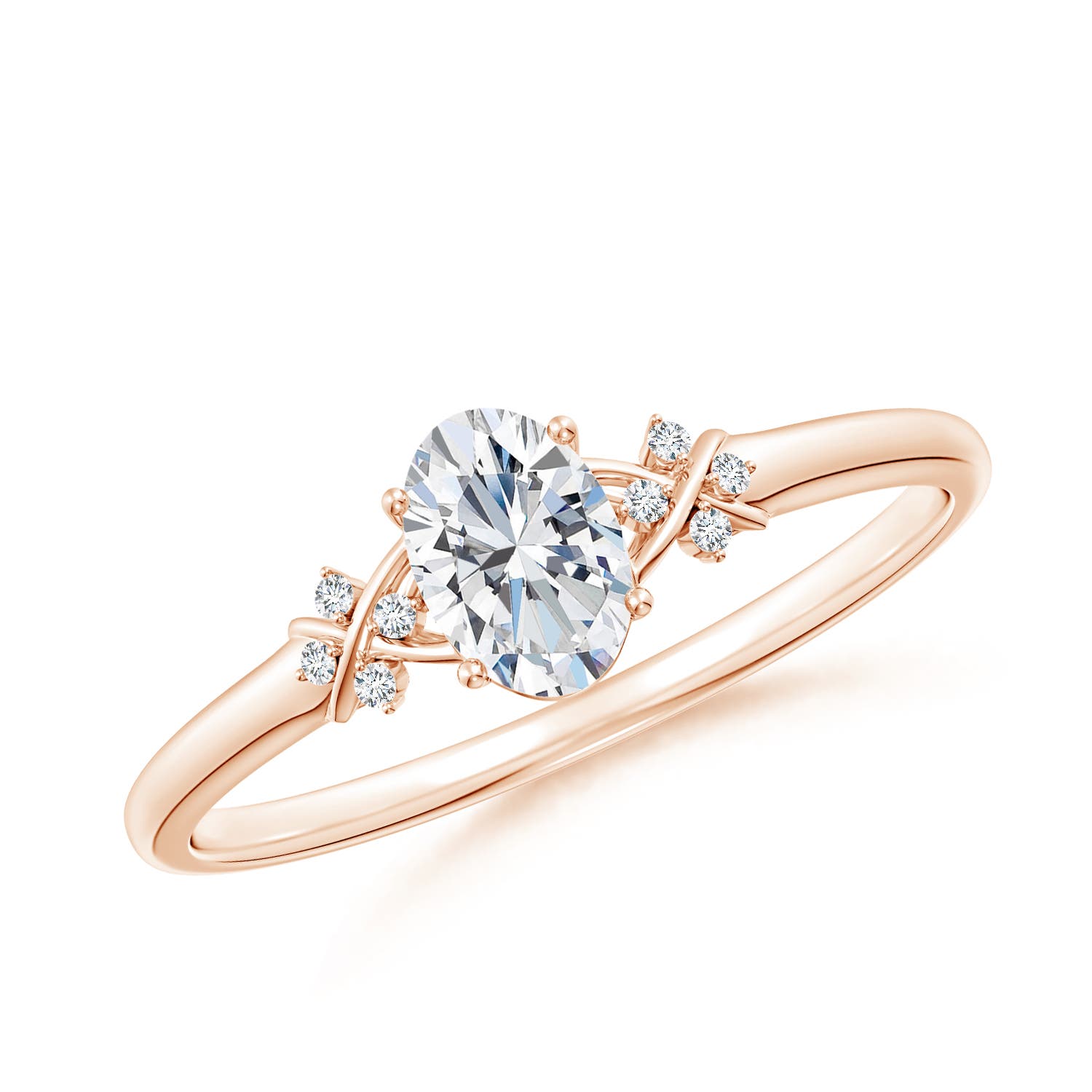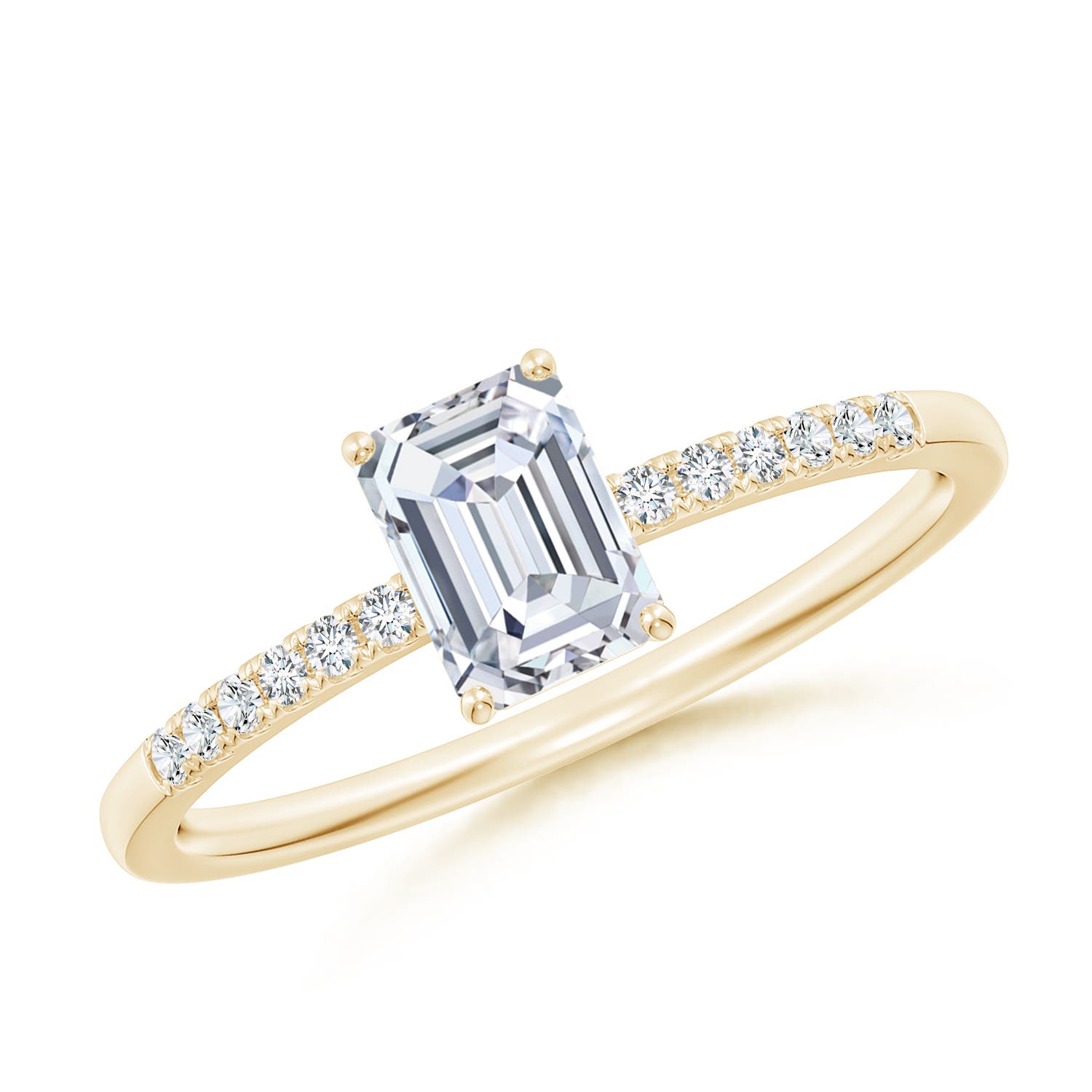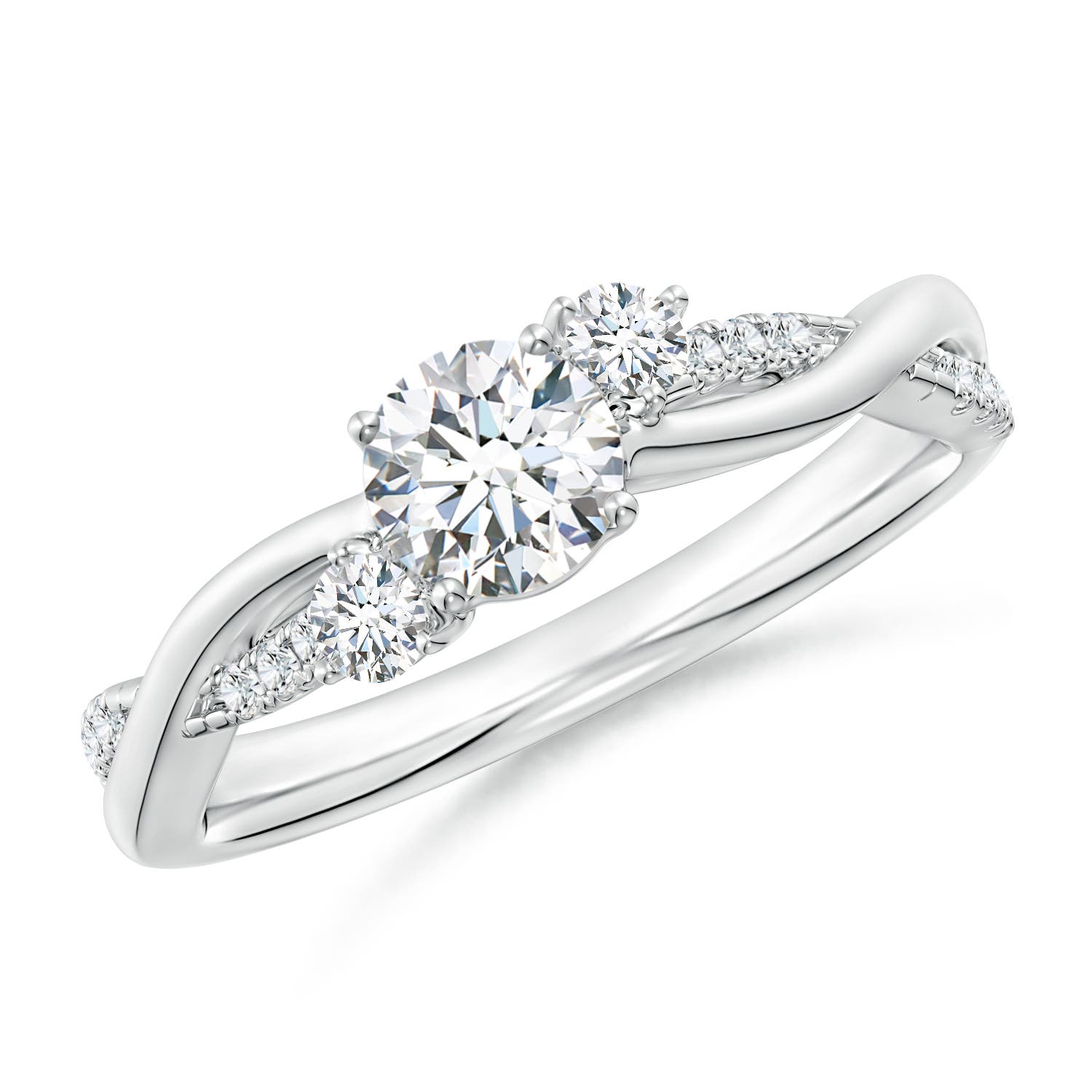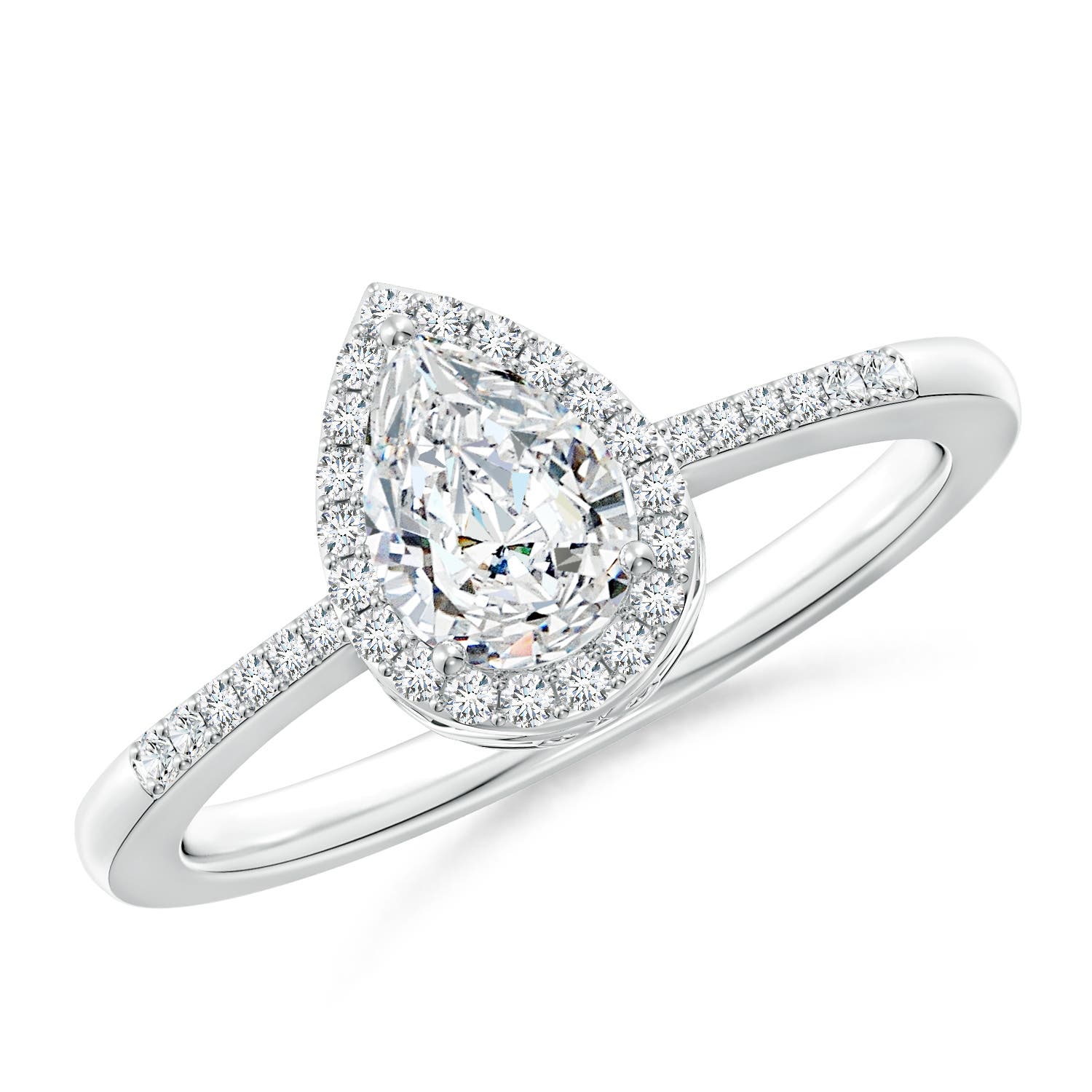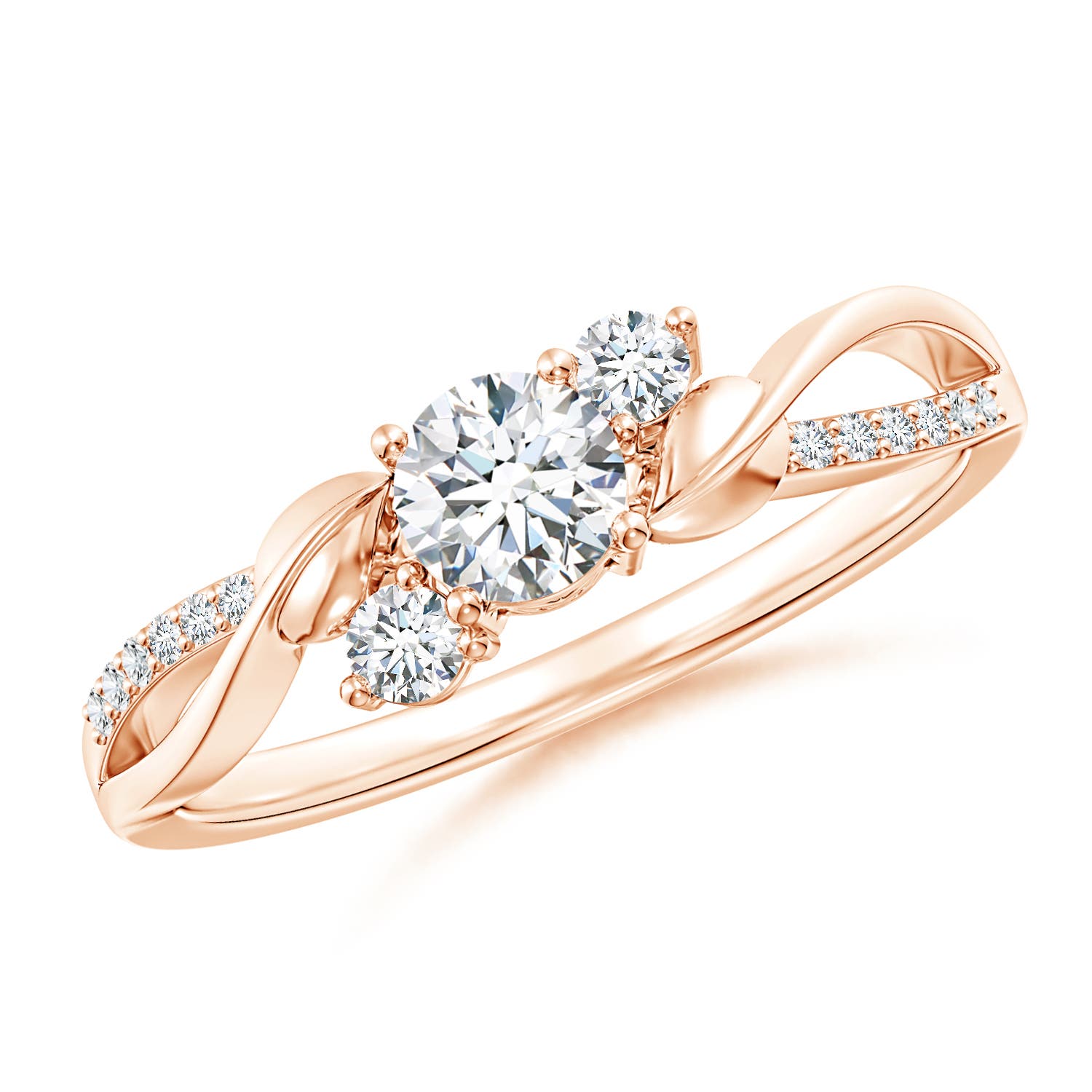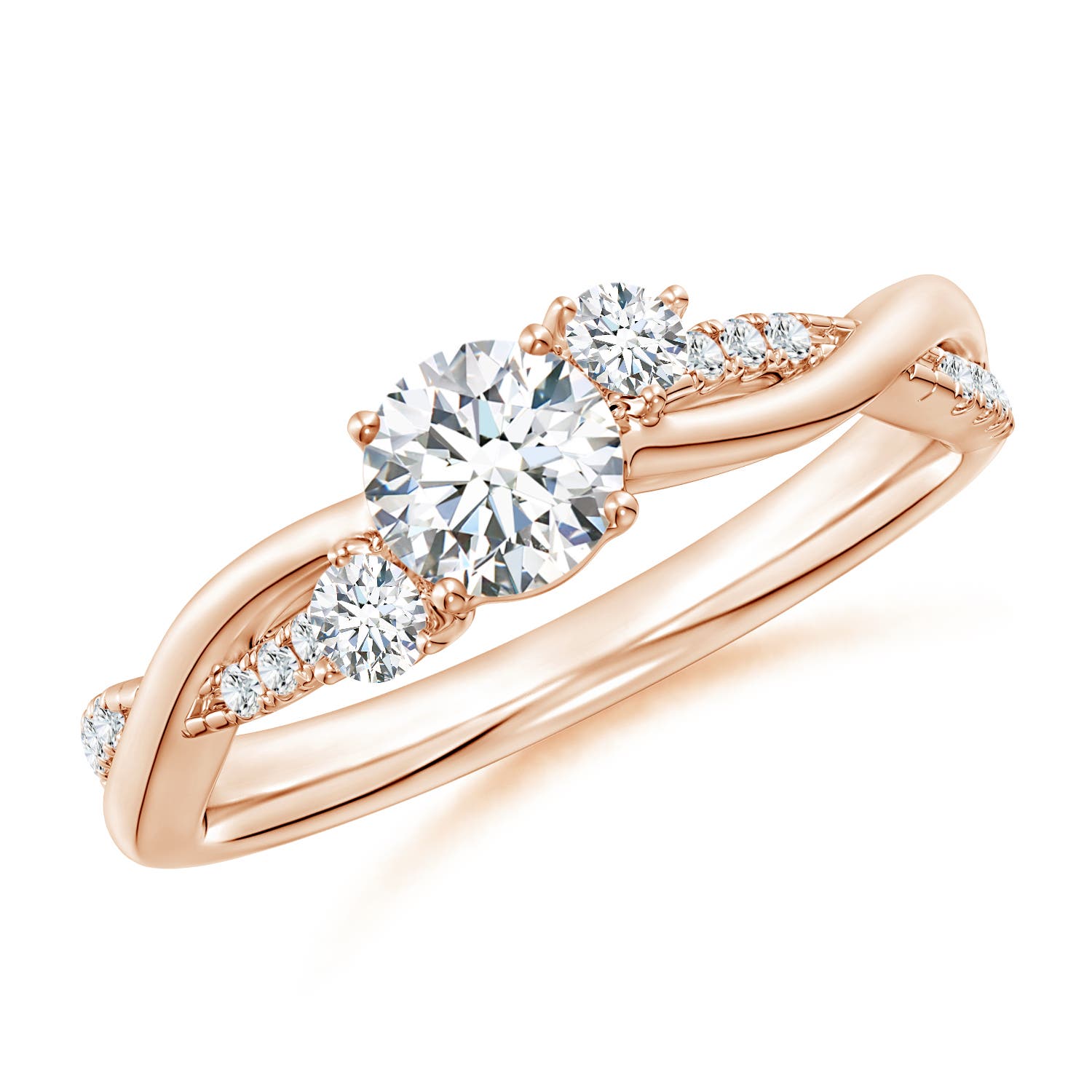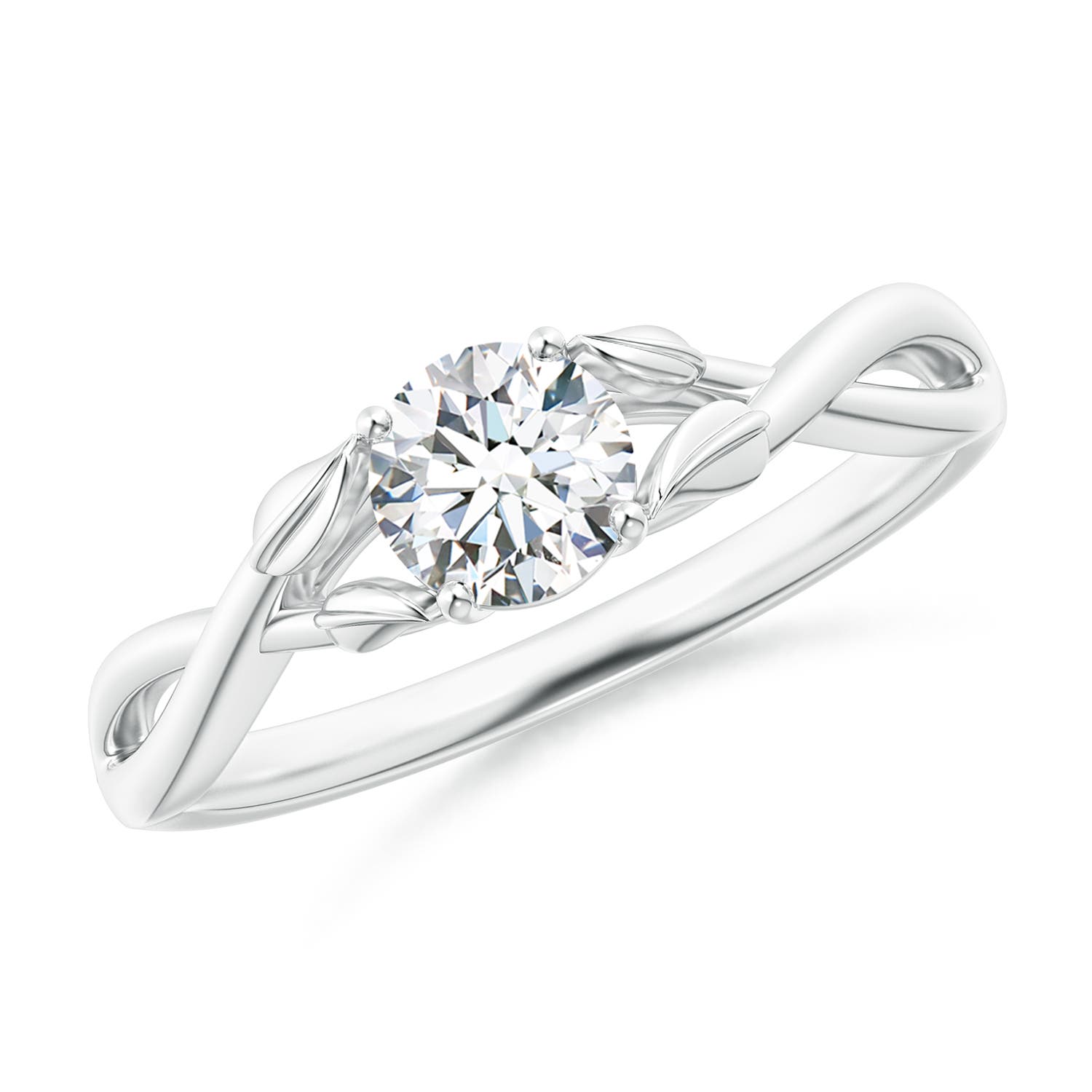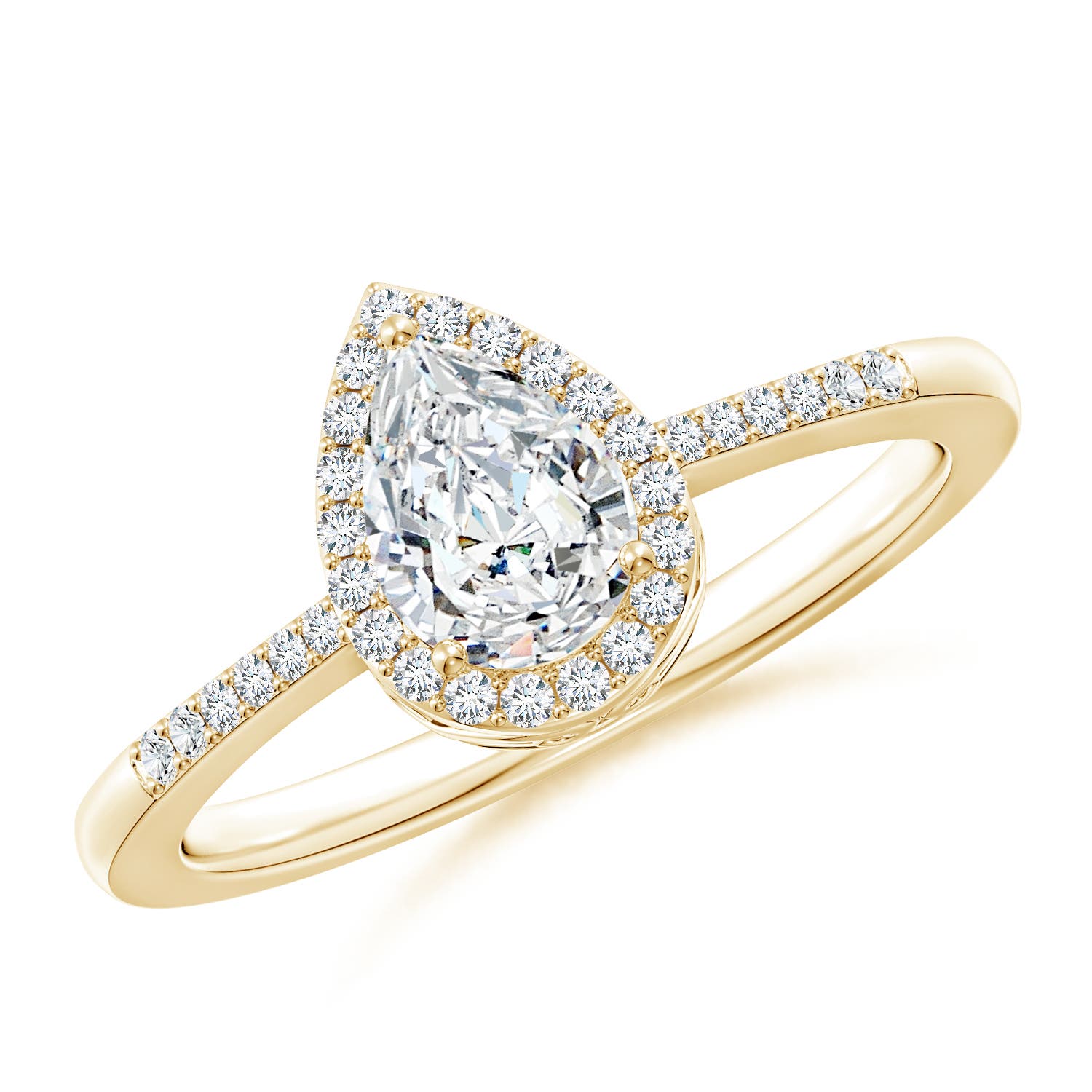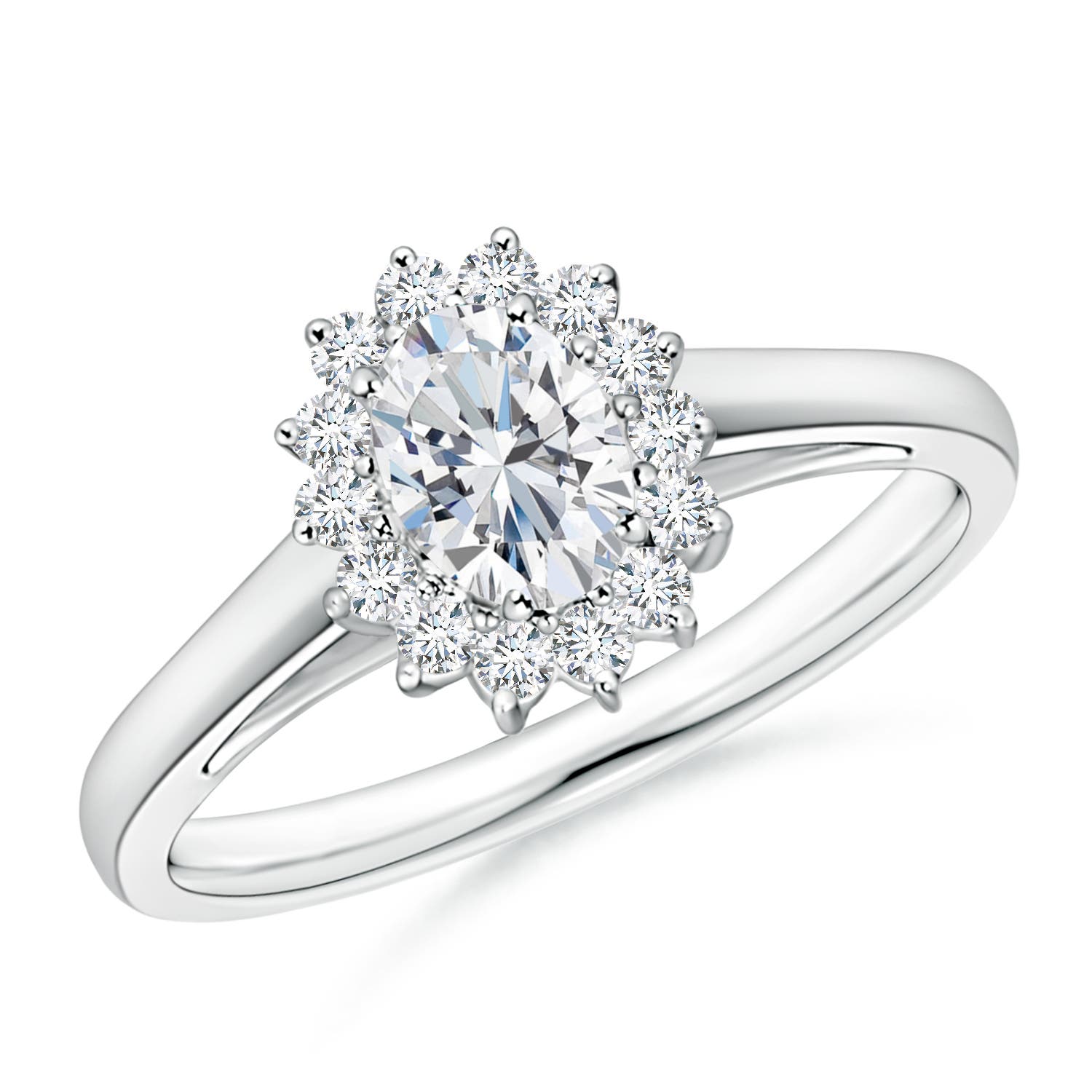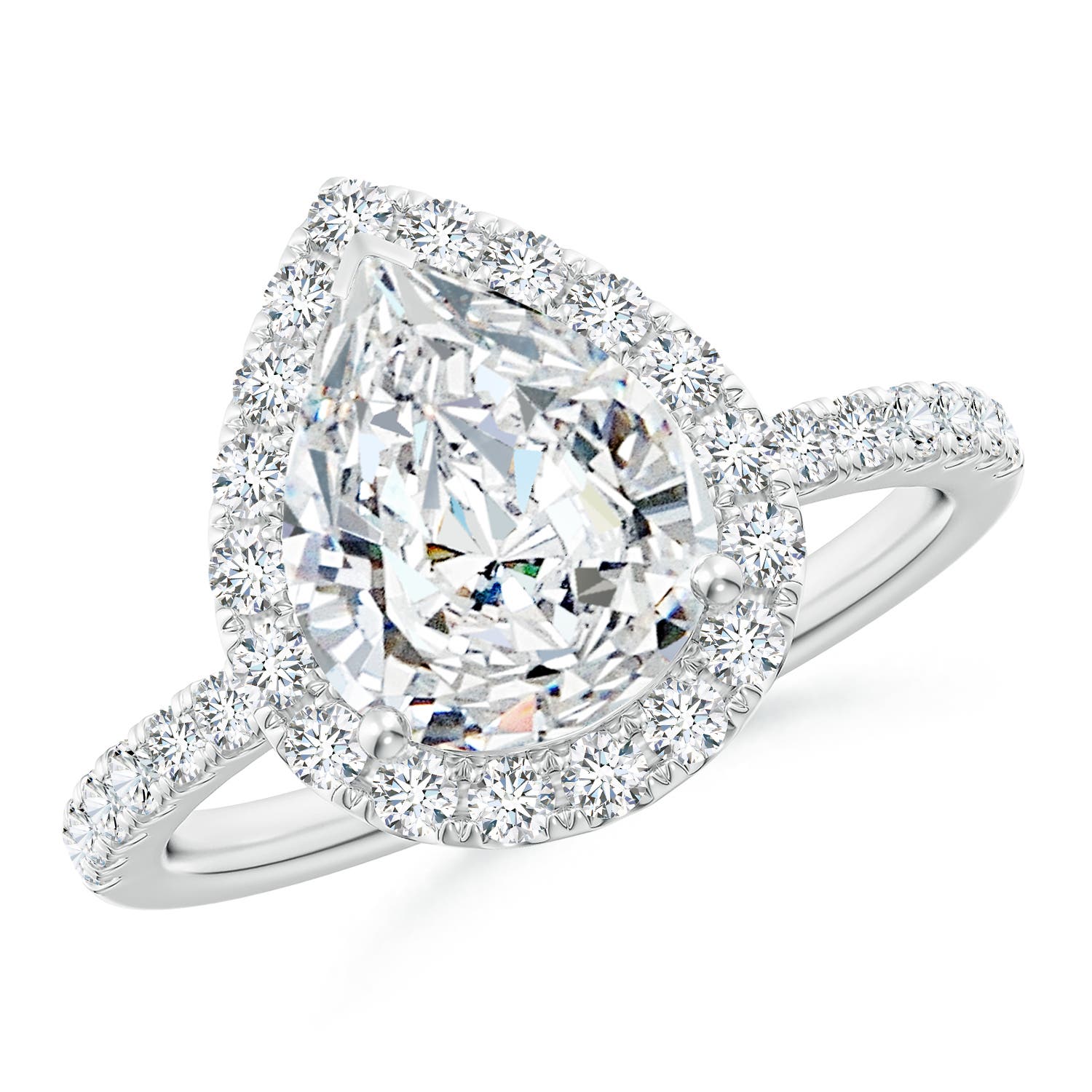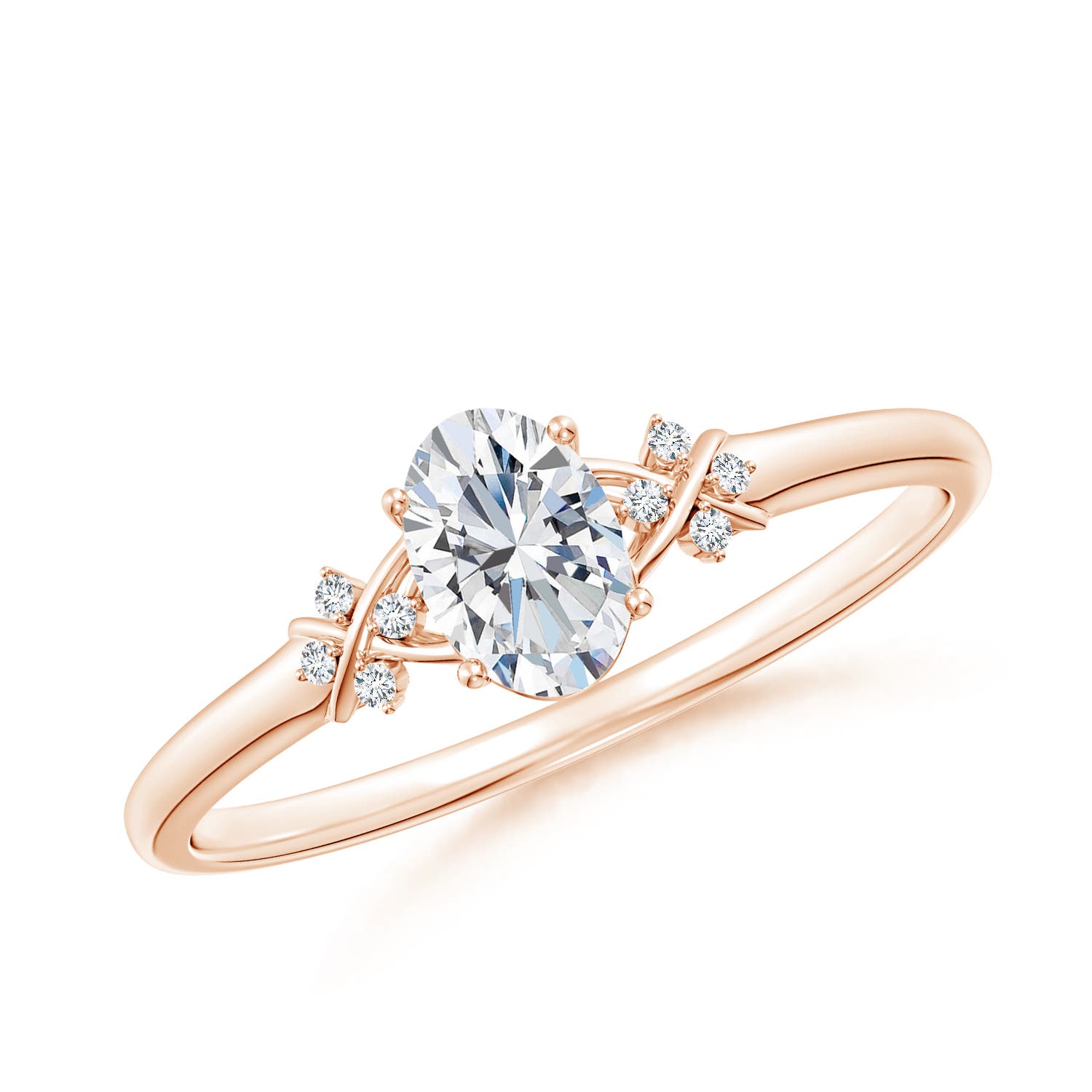Quick—close your eyes and call out the first gemstone that comes to mind. Did you say diamond? We thought so! Gorgeous, brilliant and exceptionally rare, this jewel has won the hearts of many over the years and continues to do so even today.
When buying this gem, one must always consider the diamond’s clarity chart. But what do we mean by the word ‘clarity’ and how do we buy a diamond based on the same? In this guide, we’ll be taking you through everything there is to know about diamond clarity. From discussing the diamond rating chart to the best diamond clarity, we’ve covered it all.
What Is Diamond Clarity?
Certified diamond graders base the value of a diamond on its 4Cs:
- Color
- Clarity
- Carat Weight
- Cut
The term ‘clarity’ refers to a qualitative metric that scores the visual appearance of a jewel. Here, the fewer the flaws, the higher the stone will rank on the clarity scale for diamonds. Depending on the number of inclusions present within the same, each gem is usually graded and grouped on a scale known as the diamond clarity scale or chart. We’ll expand on the same below.
But before that, let’s know more about the various kinds of inclusions commonly found in diamonds.
What Are the Different Types of Diamond Inclusions?

For the unaware, an inclusion is nothing but a flaw on or within a gemstone. It can severely impact a diamond’s quality and reduce its overall value. The most popular types of inclusions are as follows:
• Cloud
Contrary to popular belief, the cloud isn’t just one flaw – it’s several that are clustered together. They look very similar to small pinpoints and can greatly reduce a gem’s brilliance. These imperfections can also give the jewel a hazy look.
While not all stones with this flaw are titled the same, the term ‘cloudy diamond’ is usually given to certain gems that feature several large clouds.
• Cavities
Cavities are surface dents or cracks that exist on the gemstone. Depending on the other minerals present within the stone’s structure, these imperfections can appear with or without color. Needless to say, colored cavities are quite visible to the naked eye and can greatly impact a jewel’s appeal.
• Internal Graining
Internal graining is another imperfection that can negatively impact a stone’s beauty. It’s a kind of internal inclusion that’s created through irregular crystal growth and presents itself in the form of colored, white or reflective lines. Similar to the cloud inclusion, this flaw greatly contributes to the gemstone’s hazy appearance and its lesser appeal.
• Surface Graining
A variation of the above, this inclusion exists just below the surface of the diamond and not deep within.
• Pinpoint
One of the most common types of inclusions seen today, this flaw appears in the form of tiny dots on the surface of the gemstone. Depending on the number of spots present, this blemish can severely impact the clarity of the same.
• Crystal
As indicated by its name, these inclusions are essentially diamond or other mineral crystals present within the gemstone.
• Knot
A type of crystal inclusion, this flaw reaches the surface of the diamond.
• Indented Natural
Unlike other inclusions which are usually cut or hidden away, an indented natural inclusion is part of the rough stone that’s purposefully left in during the cutting process. This is done so that cutters can prove to the seller that they didn’t waste too much of the diamond. This variation resembles a dip and is found below the polished gem’s surface.
• Twinning Wisp
Interestingly, this type of inclusion is usually found in fancy diamonds. It is considered a growth defect of the stone and comprises a mix of pinpoints, clouds, crystals and feathers.
• Needle
This kind of flaw is basically a long, thin line in the shape of a needle that can either be clear or white.
• Etch Channel
While these inclusions may look man-made, they are actually natural channels created during the stone’s formation. They are formed due to the extreme heat under which the diamonds are produced.
• Feathers
Last but not least on this list is the feather inclusion. As indicated by its name, this flaw constitutes a series of small cracks that take on a feather-like appearance when viewed from different angles. While some feathers are barely noticeable, others can greatly impact the diamond’s aesthetic. In the latter’s case, these inclusions capture light and give off a white appearance that’s unappealing to the eye.
Apart from the above, several other types of inclusions can negatively impact the look and durability of the gem. However, they are quite rare and therefore not often seen.
What Factors Determine the Clarity Grade of a Diamond?

Currently, five key factors are used to determine the clarity grade of a diamond and its position on the diamond chart for clarity, also known as the diamond purity scale: size, number, nature, relief and location of the inclusions. Here’s how these factors impact a diamond’s quality:
1. Size of the Inclusion
This is one of the most important factors that determines a diamond’s placement on the clarity chart. The larger the flaws, the worse the gem’s appearance and quality.
2. Number of Inclusions
Apart from its size, graders also take into account the number of inclusions when determining a diamond’s clarity grade on the diamond ratings chart. Again, this is crucial because the number of flaws, even minor ones, can significantly impact the diamond’s overall clarity.
3. Relief of The Inclusion
In case you were unaware, the term ‘relief of an inclusion’ refers to the apparency of the flaw in comparison to the diamond as a whole. This is especially true in terms of the color of the blemish and the gemstone. Here, the higher the relief of the blemish, the darker it will be. At its most pronounced, this relief can significantly reduce the gemstone’s clarity, lowering its position on the diamond quality chart.
4. Nature of the Inclusion
Graders generally consider the nature of the inclusions when determining a diamond’s clarity grade. Here, the phrase ‘nature of the inclusion’ refers to the type of flaw present within your gemstone as well as the depth of the same.
5. Location of the Inclusion
Here, flaws located closer to the center of the gemstone’s table are more visible to the naked eye. Needless to say, this greatly reduces the gem’s clarity and can aggressively lower its grade.
On the other hand, if the blemish is closer to the girdle, it is much more difficult to see and, therefore doesn’t impact the diamond’s placement on the clarity scale and quality chart all that much.
Additional Definitions:
1) Table – This refers to the flat, large facet on the top of the gem.
2) Girdle – This is essentially the portion of the gem that creates its outline. It wraps around the largest part of the jewel and is visible from above.
What Tools Do Jewelers Use When Determining a Diamond’s Clarity?

When deciding a diamond’s clarity, graders typically hold the gemstone face up and note its appearance with both their naked eye and a 10x magnification microscope. In certain cases, the jeweler may even opt for a more powerful microscope to determine the exact clarity of the gem.
What Is a Diamond Clarity Scale?

Also known as a clarity chart for diamonds, this scale is essentially used to inspect a diamond’s clarity and grade it based on the same.
The diamond clarity chart comprises scores ranging from I (Included) to FL (Flawless). Each grade mentioned on the scale also has sub-grades. This allows for better segregation and enables the potential buyer to garner accurate information regarding the clarity of the piece.
Mentioned below are the different diamond clarity grades:
• FL (Flawless)
This is the highest clarity grade that can be given to a diamond. It’s characterized by its distinct lack of visible inclusions. The flaws present here cannot be seen even through a 10x jeweler’s loupe. Moreover, the gemstones that fall into this category on the diamond inclusion scale constitute less than 1% of the entire diamond population.
• IF (Internally Flawless)
Less than 3% of all diamonds belong to this category. They don’t feature any internal imperfections or flaws.
• VVS1 & VVS2
The inclusions present on/within these diamonds are so small that even a trained eye may find it difficult to detect them with a 10x jeweler’s loupe.
- VVS1 (Very, Very Slightly Included – First Degree) – As indicated by the category name, all the gemstones present here feature very minor inclusions.
- VVS2 (Very, Very Slightly Included – Second Degree) – While these jewels also have minor flaws, they are slightly more included than the above-mentioned grade.
- VVS2 VS1 & VS2
This is the most popular diamond clarity range, and it is number four on the diamond inclusions chart. Depending on the gem’s sub-grade, the inclusions present here will be either difficult or somewhat easy to see under 10x magnification.
- VS1 (Very Slightly Included – First Degree) – The gemstones in this grade contain several minor flaws that are difficult to find even with a 10x jeweler’s loupe.
- VS2 (Very Slightly Included – Second Degree) – This category contains jewels with inclusions that are easier to find under 10x magnification but aren’t visible to the naked eye.
- SI1 SI2
This category features several diamonds with inclusions that can definitely be seen with a 10x jeweler’s loupe. The two sub-grades of the same are as follows:
- SI1 (Slightly Included – First Degree) – As showcased by their grade, the gemstones present here are slightly included. That said, unlike the previous grades, these flaws can be easily spotted with a trained eye with the use of a microscope.
- SI2 (Slightly Included – Second Degree) – The gem placed within this category has several inclusions that can be seen from the stone’s pavilion and the top of the jewel.
Additional Definition: A gemstone’s pavilion is the space that’s located below its girdle.
- I1, I2, I3
Finally, at the end of the clarity scale for diamonds lie none other than the included gemstones. These jewels are characterized by several inclusions that are visible to the naked eye. Needless to say, the clarity and brilliance of these gems aren’t as high quality as the jewels present in the previously discussed categories.
- I1 (Included – First Degree) – The gemstones placed within this category contain several inclusions that can almost always be seen with the naked eye.
- I2 (Included – Second Degree) – The jewels with this grade feature multiple, very prominent inclusions.
- I3 (Included – Third Degree) – Lastly, all the stones present in this category have extremely prominent inclusions that are not only visible but can also impact the jewel’s durability in the long run.
So, this was all about the clarity grade for natural diamonds.
Shop Natural Diamonds
Sparkle effortlessly with diamonds
Do you want to buy a lab-grown engagement ring for women? Or are you curious to learn about the lab-grown diamond clarity chart? Well, we’ve got you covered!
The clarity grades for lab-grown diamonds are assessed using the same criteria as natural diamonds. The Gemological Institute of America (GIA), International Gemological Institute (IGI) and other reputable gemological laboratories use the same clarity grading standards for both types of diamonds. So, just like natural diamonds, the lab-grown diamond clarity scale ranges from Flawless (FL) to Included (I).
Lab-Grown Diamond Inclusions
Now that you know the lab-grown diamond ratings scale is similar to natural diamonds, here are some inclusions you should know about.
- Lab diamonds created using high pressure/high temperature (HPHT) often contain small metallic inclusions. These inclusions are only visible under magnification, but they can still impact the lab-created diamond clarity scale.
- Similarly, lab diamonds made via chemical vapor deposition (CVD) can contain small black spots or inclusions made of graphite.
It’s important to note that lab-grown diamonds are formed under controlled conditions. So, they’re much more likely to receive higher clarity grades than natural diamonds.
Tip: When purchasing a natural or lab-grown diamond engagement ring, look for a certification from a reputable gemological laboratory to ensure transparency and accuracy in the grading process.
Shop Lab-Grown Diamonds
Go bigger on the carat for less
What Are Clarity-Enhanced Diamonds?
In simple terms, clarity-enhanced diamonds are gemstones that undergo different treatments to reduce their inclusions and improve their overall clarity. The major techniques used to do the same are as follows:
• Deep Boiling
This technique is mainly used on diamonds with black blemishes or cavities on their surface and involves boiling the gemstone in an acidic solution under deep pressure.
It’s worth noting here that this process does not fill the cavities in question but only removes the black color. Furthermore, it does not penetrate the gem and hence has zero impact on the inclusions present within it.
Believe it or not, this method is actually one of the most affordable cleaning processes today. It is considered common practice within the diamond industry and several sellers use it to enhance their gemstone’s position on the diamond clarity scale. Unlike other enhancement techniques, this one does not impact the gem in any way and is the only one approved by the GIA.
• Laser Drilling
This method is typically used to tackle the black inclusions present within the gemstone. In this case, a tiny, almost microscopic hole is burned into the inclusion with the help of a laser. Once done, the diamond is then deep-boiled to remove the dark matter present within the same.
Important Note: As seen above, this process can only be completed by creating a tunnel inclusion within the gemstone. It can greatly impact the diamond’s quality and durability and is therefore not approved by the Gemological Institute of America.
• Special Laser Drilling
To reach the inclusions present within the gemstone, a thin microscopic layer is generally burned on the surface of the stone here. Fascinatingly, while these inclusions are technically larger than the tunnel variation mentioned in the previous paragraph, they are more natural-looking. The flat plane cavities caused by the same are also easy to fill.
That being said, do note that this method also reduces the gem’s durability and is also not approved by the GIA.
• Fracture Filling
While this process does not remove the dark material present in cavities, it does go a long way in filling its fractures. It does this with the help of extremely small amounts of silicon and other compounds. This process is particularly useful for filling small feather inclusions that are clear. It is also used to fill the cavities that are created through special laser drilling.
While this method doesn’t reduce a diamond’s durability, it does impact its brilliance and shine. It could also trap air bubbles within its body. When first presented, these gemstones may appear flawless from above. However, their fillings prevent the light from reaching the other facets present within. Over time, this can cause the jewel to develop a hazy, cloudy appearance that’s relatively unappealing.
What Are the Pros and Cons of Clarity-Enhanced Diamonds?
As with any treated jewel, there are several pros and cons when it comes to clarity-enhanced diamonds. The main ones are as follows:
Pros:
- Clarity-enhanced diamonds may appear eye-clean.
- These gemstones are usually 30-50% more affordable than their non-enhanced diamond counterpart.
Cons:
- As the Gemological Institute of America does not grade laser-drilled and fracture-filled jewels, you may find it difficult to get a valid certificate of authenticity here.
- These jewels aren’t as valuable as their non-enhanced counterparts.
- Enhanced diamonds are more likely to chip or break if dealt a hard blow.
- Cleaning this kind of gemstone is slightly more difficult as it cannot be exposed to ultrasonic cleaners or high temperatures.
- Fracture-filled gems aren’t as brilliant as non-enhanced jewels and can develop a hazy or cloudy appearance in the long run.
- These jewels are more difficult to resell and trade.
- Enhanced diamond bands and other jewelry items are more difficult to repair and resize. This is because the gems are more likely to break at this time.
Are Clarity-Enhanced Diamonds Worth the Buy?
That really depends!
If you’re working on an extremely tight budget and have your heart set on a diamond, then a clarity-enhanced piece might be a good option for you. Having said that, these gemstones come with a long list of cons and we, therefore, don’t recommend them to anyone who can afford a non-enhanced stunner.
What Clarity Grade Is Ideal for Your Diamond?
Whether it’s for something important like a diamond engagement ring or something simple like stud diamond earrings, picking the right clarity is vital to the look of your piece. And while opting for a flawless or very, very slightly included jewel may seem like the logical choice, it may not be the most ideal for you!
When searching for the ideal clarity grade, several things need to be taken into consideration. This includes factors like the cut of the gemstone, its size and of course, your budget.
1) Gemstone Cut
For the uninitiated, a gemstone cut refers to the stone’s shape and the arrangement of its facets. Contrary to popular belief, a good cut can actually impact the fire, brilliance and sparkle of a jewel and is paramount when determining the quality grade of the same. Having said that, each cut comes with its characteristics and, therefore requires different clarity grades. Noted below is a diamond cut and clarity chart with some examples of this:
| Cut /Shape | Carat Weight | Clarity Grade |
| Round | less than 1 carat
more than 1 carat |
VS2, SI1 or SI2
VS1 or VS2 |
| Emerald, Baguette and Asscher | VS2 or above | |
| Oval, Cushion, Radiant,
Pear and Marquise |
SI1 or SI2 | |
| Princess | SI1 or SI2 without flaws
at the edges |
|
| Heart-Shaped Diamonds | VS2 or SI1 |
• Round Cut
One of the more classic options out there, the round cut is a great choice for your diamond. Not only is it gorgeous to look at but its facet pattern greatly benefits the gemstone by hiding its inclusions and enhancing its shine.
Considering the same, if your jewel weighs less than 1 carat we recommend opting for one with a VS2, SI1 or SI2 clarity grade. On the contrary, if your gem weighs more than 1 carat, choose either a VS1 or VS2 clarity grade. This will give your piece an eye-clean look without causing you to break the bank.
Read: Diamond Cuts and Shapes
• Emerald-Cut, Baguette and Asscher
Also known for their step cuts, these shapes are defined by their large table widths. Each facet here is specially created to highlight the beauty of the jewel and give the onlooker an unobstructed view of the same. As such, ensuring that your stone is eye-clean is key.
For the best results, we recommend opting for a diamond ring or other jewelry item with a diamond clarity grade of VS2 or above.
• Oval, Cushion, Radiant, Pear and Marquise
Classy and eye-catching, these cuts/shapes are all the rage today. It goes without saying that this is due to more than one reason. Apart from being gorgeous to look at, these cuts/shapes also greatly help hide the stone’s inclusions. This gives more leeway to the buyer and ensures them a beautiful piece at a more affordable piece.
To get the most bang for your buck, we recommend opting for an SI1 to SI2 clarity grade range.
• Princess Cut
Similar to the oval and cushion cut, a princess cut is a great option if you want to pick one that ranks at SI1 or SI2 on the stone clarity chart.
That being said, make sure you consider the location of the inclusions and avoid gems that feature flawed corners. This is because the inclusions present here can reduce the durability of the stone’s edges and cause them to chip during an accidental blow.
• Heart-Shaped Diamonds
While this cut definitely hides inclusions better than a round cut, it doesn’t do it as well as the princess and oval cut. As such, we highly suggest choosing a diamond with a VS2 or SI1 clarity grade. Trust us when we say that this will give you the best value for your money.
Shop Diamonds by Cut
Build your jewelry collection
2) Size
Apart from the cut of the stone, it’s imperative that you also consider the size of your jewel when picking a clarity grade. Here, the larger the gem, the more visible its flaws. Hence, if you plan on getting a big jewel (1-carat and above), opt for a better clarity grade (VVS2 and above). Having said that, if your stone is on the smaller end of the spectrum (below 1-carat) then a lower clarity grade (SI1 and above) would work just fine.
Additional Definition: The carat weight of a gemstone is the unit of measurement used to determine the physical weight of the same. Here, one carat equals 0.200 grams.
3) Budget
Of course, you should always take your budget into account when selecting your clarity grade. This is simply because gems with a high score on the diamond clarity scale tend to come with extremely large price tags.
What’s more, as most of the inclusions present in the SI categories and above aren’t visible to the naked eye, opting for a lower clarity grade gem is almost always a good idea. Not only will this allow you to use the majority of your budget on the other 3Cs, but it will also ensure you a beautiful gemstone at the end.
Now that you know how to pick the ideal clarity grade for you, let’s discuss the best way to buy your diamond online.
What Should You Keep in Mind When Buying a Diamond Online?

Online shopping is the new way of the world and buying your jewels online can actually benefit you in more ways than one. Besides getting the best deals, you can also compare multiple stones on different websites before picking the perfect option for you. So, some important online buying tips are as follows:
• Research the Seller
Unfortunately, because of the diamond’s fame, several fakes exist in the market today. To avoid getting duped, it is imperative that you research the seller before buying your piece.
To do this, start by going through the company’s website and browsing through all their uploaded certificates. Make sure that they are all up to date.
Next, go to the brand’s social media profile and read all the comments present under each post. This will give you more information about the firm’s products and its customer service.
Finally, we suggest checking the organization’s score on various customer rating websites like Bizrate, for example. If the company has a score of 4 and above (out of 5), then you can consider it a safe option.
• Check Out the Company’s Return Policy
This is one of the most important things you need to do before buying your diamond jewelry online. Read through the seller’s return policy and make sure that it’s an ironclad one that allows you to either return or exchange your piece if it differs from what’s shown/written online in any way, shape or form.
• Get Your Gem Professionally Checked
At the end of the day, only a professional would be able to tell you with 100% accuracy whether or not your jewel is real. This is because they are highly trained to spot the minute differences that make up an imitation piece. Considering the same, if you want to be super sure, you can get your stone checked by a trusted jeweler as soon as you receive it.
• Opt for a GIA-Certified Gemstone
For the uninitiated, the Gemological Institute of America (GIA) is one of the world’s premier gemstone organizations. Their main aim is to protect gem lovers and collectors alike from imitation pieces.
They do this by putting each gem through a stringent evaluation process that’s devoid of any grading bias. The final certificate, which is given along with the gemstone is an extensive one that contains several facts about the gem in question. This includes its cut, carat weight, color and clarity. Of course, this information is ironclad and cannot be disputed by anyone in the world.
Diamonds aren’t the easiest to buy and understanding the nuances of their clarity grades can make the process even more difficult. Having said that, by keeping the information mentioned in this article in mind, we’re sure you’ll wind up with a piece that makes you truly happy.
Did You Know?
- Diamonds are the only gemstone in the world made of one element – carbon.
- They are the toughest gems on Earth and feature a 10/10 score on the Mohs scale of mineral hardness.
- Many scientists believe that the first diamonds were crystallized 3.3 billion years ago. This makes them almost as old as the Earth itself (4.5 billion years). Not only that, but these dates essentially mean that the formation of the stone began even before dinosaurs walked the Earth.
- The tradition of proposing with a diamond engagement ring actually began in 1477. It started when the Archduke Maximillian of Austria gave Mary of Burgundy a gold ring studded with diamonds in the form of an M.
- The largest gem-quality rough diamond ever found is known as the Cullinan diamond. It was first discovered in 1905 in South Africa and weighed a mind-blowing 3106 carats. The rock was gifted to King Edward VII and was eventually cut into nine large and 96 small gemstones – each of which boasted unmatchable color and clarity and was the best in terms of diamond quality. Currently, three of the large diamonds are displayed in the Tower of London.
Interestingly, one of the most common questions we get asked is whether color or clarity is more important in a diamond. Do you also want to know the answer to this question? If so, read our article titled ‘Diamond Color vs. Clarity – Which Is More Important?’
Diamond FAQs
Q1. What is Diamond Clarity?
Diamond clarity refers to the presence of internal (inclusions) or external (blemishes) flaws or imperfections within and on the surface of the stone.
Q2. How is Diamond Clarity Graded?
Diamond clarity is graded using the GIA clarity grading system, which features 11 clarity grades, ranging from ‘flawless’ (FL) to ‘obvious inclusions’ (I3).
Q3. What are the Different Clarity Grades?
The different clarity grades in the GIA clarity grading system are Flawless (FL), Internally Flawless (IF), two categories of Very, Very Slightly Included (VVS1 and VVS2), two categories of Very Slightly Included (VS1 and VS2), two categories of Slightly Included (SI1 and SI2), and three categories of Included (I1, I2, and I3).
Q4. Does Clarity Affect a Diamond’s Appearance?
Yes, it does. The inclusions in a diamond can impact the path of light reflected through the stone, hindering its beauty and brilliance. However, certain cuts can hide a diamond’s inclusions making it eye-clear to the viewer.
Q5. Is Clarity the Most Important C?
Based on the order of importance, cut and color come before clarity, followed by carat.
Q6. Can I See Inclusions in a Diamond?
The visibility of inclusions in a diamond depends on the type and size of the inclusions, among other factors. Some inclusions are too tiny to see with the naked eye while others can be easily spotted.
Q7. What Clarity Should I Choose?
Flawless diamonds are the top grade in the GIA Clarity Grading System and also the most expensive. You can also opt for other clarity grades if you’re trying to balance the other C’s to suit your budget. Ultimately, the choice is yours.

























